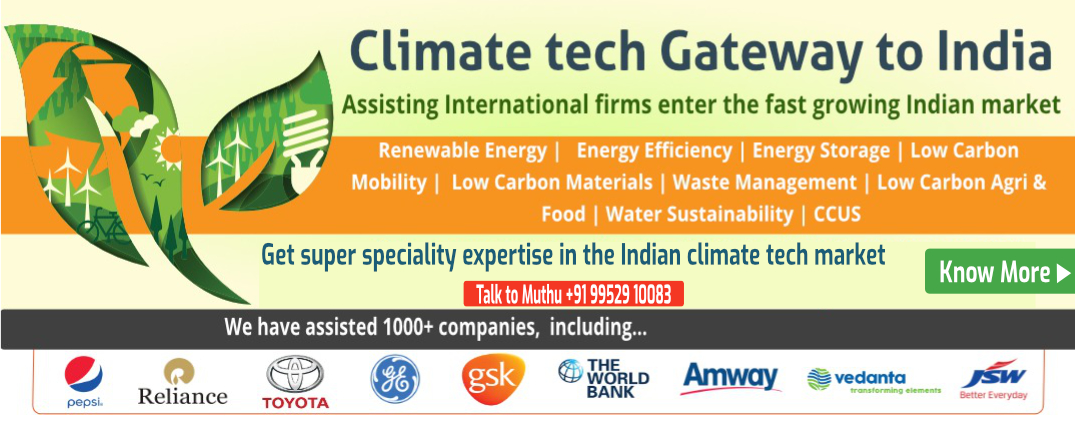This post is a part of Climate G2I Intelligence series from Energy Alternatives India (EAI), India’s leading climate-tech consulting firm.
G2I stands for Gateway 2 India, and provides comprehensive market intelligence and go-to market assistance for International firms entering the Indian climate-tech market. More about Climate G2I from here
Envision Energy, a global leader in smart energy solutions, and AM Green, a venture specializing in green hydrogen and ammonia (backed by the founders of Greenko Group), have joined forces in India. Their collaboration, announced at the World Economic Forum in Davos, Switzerland, aims to create a secure domestic manufacturing base for wind turbines and drive green hydrogen initiatives throughout the country.
AM Green is actively building its portfolio in green hydrogen and related green molecule projects. This partnership with Envision Energy signifies a significant step toward establishing a reliable supply chain for AM Green’s clean energy projects. Both companies bring a strong commitment to decarbonization and sustainable energy solutions.
This collaboration aligns with India’s ambitious renewable energy targets and its commitment to diversifying its energy mix. The Indian market holds tremendous promise for wind energy and green hydrogen, two pillars of a sustainable future. With strong government support and a growing demand for clean energy, this sector is poised for remarkable growth.
The partnership between Envision Energy and AM Green is not the only significant development within India’s green energy landscape. Various alliances are actively forming to support innovation and growth in this sector. Some notable examples include an alliance of leading Indian energy players, like India Hydrogen Alliance (IH2A) committed to developing a robust green hydrogen ecosystem in India, and Green Hydrogen Catapult, a global initiative aiming to accelerate the production of green hydrogen at a cost below USD 2/kg.
Net Zero by Narsi
Insights and interactions on climate action by Narasimhan Santhanam, Director - EAI
View full playlistWhile the outlook is positive, the wind and green hydrogen sectors need to address several key challenges in India like cost reduction to lower production costs for wind turbines, electrolyzers, and associated infrastructure is vital for these technologies to compete with their fossil fuel counterparts. Infrastructure development, and technological innovation are the other key challenges in this sector. Fortunately, India’s government is actively supporting the clean energy transition through several enabling policies and drivers like financial incentives, regulatory framework, and R&D support.
India is simultaneously pushing for indigenization in its wind sector, aiming for increased self-reliance. It has achieved a significant level of domestic manufacturing capacity, particularly in wind turbine components. However, there’s still room to enhance domestic production of high-tech components and improve the overall efficiency of locally manufactured turbines.
The wind and green hydrogen sectors in India are vibrant and rapidly evolving. With strong government support, emerging partnerships, and focused efforts toward innovation and cost reduction, India is well-positioned to become a global leader in clean energy.
This post is a part of Climate G2I Intelligence series from Energy Alternatives India (EAI), India’s leading climate-tech consulting firm.
G2I stands for Gateway 2 India, and provides comprehensive market intelligence and go-to market assistance for International firms entering the Indian climate-tech market. More about Climate G2I from here






 Our specialty focus areas include
Our specialty focus areas include



